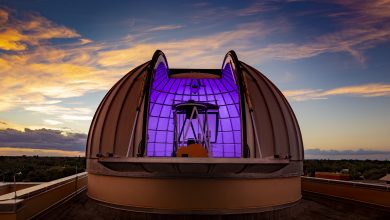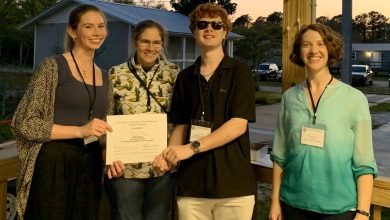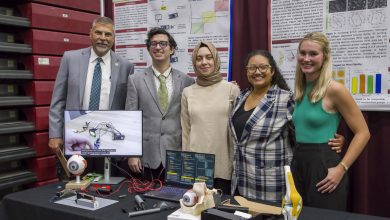Newly Acquired Remote Access to Chilean Telescope Gives Florida Tech Astronomers Expanded View
MELBOURNE, FLA.— A lot of patience, preparation and luck are required for an astronomer to have just one a successful night of observation. Access to the worlds’ most powerful telescopes is scarce; and once time is secured (typically six or more months in advance), astronomers are at the mercy of the weather when their rare opportunity to use the telescope finally arrives.
Remote access to a telescope in the Andes Mountains of Chile gives a select group of astronomers and their students, including those at Florida Institute of Technology, a new window to the wonders of the Southern Hemisphere’s nighttime sky. Astronomers from 10 institutions have banded together through a consortium called the Southeastern Association for Research in Astronomy (SARA), to refurbish and automate a 24-inch telescope at Cerro Tololo Inter-American Observatory in Chile. With the help of the Chilean telescope and a similar 36-inch telescope the group already operates at Kitt Peak in Arizona, each SARA institution can now view the night skies from both the Northern and Southern Hemispheres (even simultaneously) for about 30 days out of the year.
In order of membership, SARA’s members include Florida Institute of Technology, East Tennessee State University, Valdosta State University, Florida International University, Clemson University, Ball State University, Agnes Scott College, University of Alabama, Valparaiso University and Butler University. The group was originally formed in 1992 by Florida Institute of Technology, East Tennessee State University, the University of Georgia (which left the group in 2006) and Valdosta University.
The telescope in Chile was formerly operated by Lowell Observatory in Arizona and was closed by Cerro Tololo in 1996. SARA invested about $250,000 in upgrades to make the telescope remotely accessible over the Internet.
Together, “the 30 astronomy researchers and 10 institutions that make up SARA form a virtual astronomy department that is as large as many major astronomy departments in the U.S.,” said Terry Oswalt, SARA Chairman and head of physics and space sciences at Florida Institute of Technology.
Alone, none of SARA’s members would have been able to acquire and refurbish the telescopes in Chile or Arizona. “This has been a big issue in astronomy for 50 years. There are definitely haves and have nots,” said William Keel, a professor of astronomy and physics at the University of Alabama, who schedules the telescope for SARA.
SARA’s success stems from not only being able to pool their resources, but also to acquire excellent facilities for a very low cost. “We’re able to benefit from someone else’s investment. We’ve managed to phenomenally lower operating costs for a telescope of this size,” Keel said. For roughly the cost of one night on a very large telescope, SARA collaborators instead get about 30 nights of time a year on each telescope. All those extra nights of viewing and access to the Southern Hemisphere open a host of new opportunities to pursue longer-term and more risky projects.
The two SARA telescopes are separated by thousands of miles. “Just as having two eyes gives depth perception, the two SARA telescopes give us the ability to measure distances and orbits for objects like potentially hazardous asteroids,” according to Oswalt, “in addition, because they are at different longitudes, they allow us to stay focused on an object for more than the 10 or so hours typical of one site.”
Oswalt mainly studies white dwarf stars, the dense small cores of dead stars that no longer burn hydrogen. He uses some of his SARA observation time to study the flickering that some white dwarfs exhibit. In the same way seismology tells us about the earth’s interior, such flickering can be used to study a white dwarf’s internal structure.
Professors and their students can now operate one or both of the telescopes from their university labs, offices or homes on assigned nights, sometimes changing schedules at the last minute to accommodate unexpected opportunities, such as Dieter Hartmann, a Clemson University professor who studies gamma ray bursts. He needs to observe a burst just minutes after it’s reported.
“We can easily trade or share nights in real time,” Oswalt said. “To get what we need, it’s not unusual for us to call a colleague and ask permission to take over in the middle of the night. This type of flexibility just isn’t available at more traditional observatories.”
The consortium operates both telescopes under an agreement with the National Optical Astronomy Observatories, which are funded by the National Science Foundation (NSF). The NSF, through a grant to East Tennessee State University, one of the SARA members, recently approved matching instrumentation upgrades and enhancements for the cameras to be used on both telescopes.
The National Optical Astronomy Observatories maintains Kitt Peak National Observatory, home to the world’s largest collection of telescopes, and the Cerro Tololo Inter-American Observatory.






